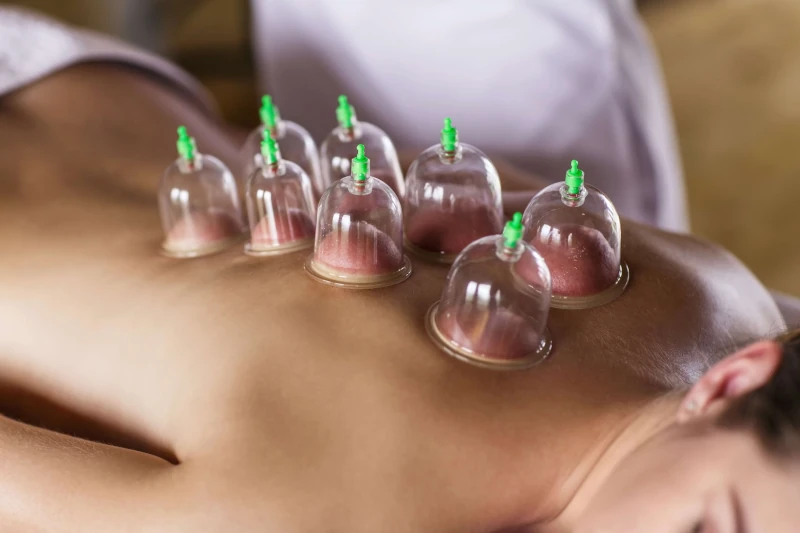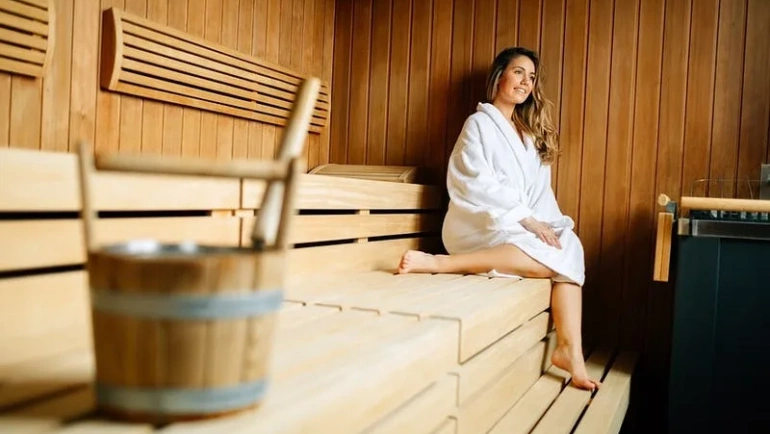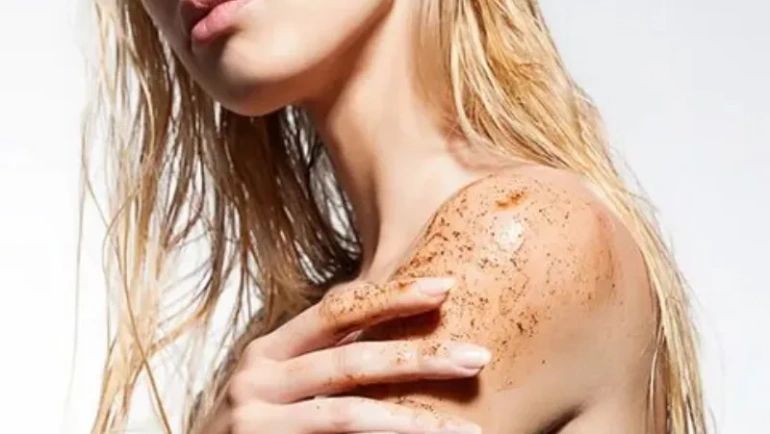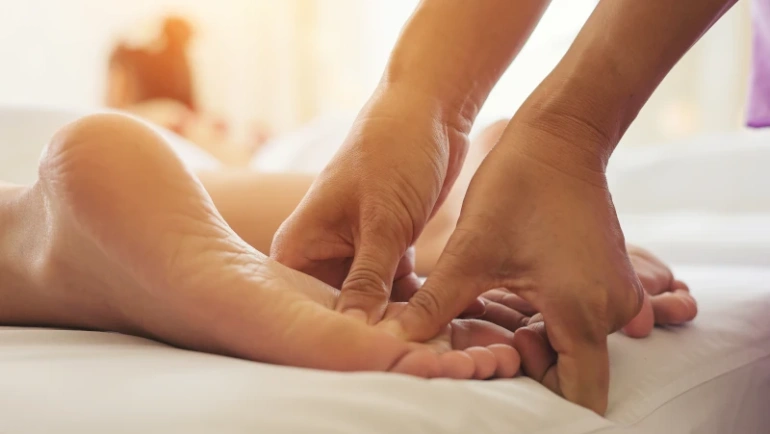The world of wellness is as vast and varied as the cultures that practice it. Among the ancient therapies that have stood the test of time is cupping massage. As seasoned travelers, we’ve encountered this intriguing practice in various forms across the globe, from the bustling streets of Beijing to serene spas in Istanbul. This ancient therapy, often characterized by its distinctive circular marks, has captured the curiosity of many wellness enthusiasts. But what exactly is cupping massage, and what truths lie beneath its colorful marks? In this article, we’ll unravel the myths and facts surrounding cupping massage, providing you with a clear understanding of this ancient therapy.
Cupping massage is a form of alternative therapy that uses suction to promote healing. It involves placing cups on the skin to create a vacuum, which supposedly helps in improving blood flow, reducing pain, and facilitating healing. This therapy has been part of traditional Chinese medicine for thousands of years and has recently gained popularity in the West. The resurgence of interest in cupping can be attributed to high-profile athletes and celebrities who have publicly endorsed its benefits, thereby sparking curiosity and acceptance in mainstream wellness circles.
Cupping Massage Therapy
Beyond its therapeutic claims, cupping massage is also seen as a holistic approach to well-being. It is believed to balance the body’s energy, or “qi,” and restore harmony within. This emphasis on energy flow aligns cupping with other Eastern practices like acupuncture and tai chi, which focus on maintaining the body’s equilibrium. As more people seek natural and non-invasive solutions to health issues, cupping massage continues to gain traction as a viable option for those looking to explore alternative healing methods.
The process of cupping involves heating the air inside a cup to create a vacuum. This is done by lighting a small flame inside the cup, which is then quickly placed on the skin. As the air cools, it contracts, pulling the skin slightly into the cup and increasing blood flow to the area. There are also modern methods using pumps to create suction without heat. This process is said to help alleviate muscle tension and promote relaxation.
Myths vs. Facts
Myth 1: Cupping is Painful
One common misconception about cupping massage is that it is painful. While the sight of skin being sucked into cups might seem alarming, most people report a feeling of warmth and relaxation. The sensation is often compared to a deep tissue massage, and while some discomfort might occur, it should not be painful. If it is, it’s crucial to communicate with your therapist to adjust the suction intensity.
It’s important to note that the experience can vary based on individual pain thresholds and the technique used by the therapist. For those new to cupping, a mild suction can be applied initially, allowing the body to adapt gradually. Over time, as one becomes more accustomed to the therapy, the intensity can be adjusted to suit personal preferences and therapeutic needs. This adaptability makes cupping an accessible option for a wide range of individuals seeking relief from various ailments.
Fact: Cupping Can Improve Blood Circulation
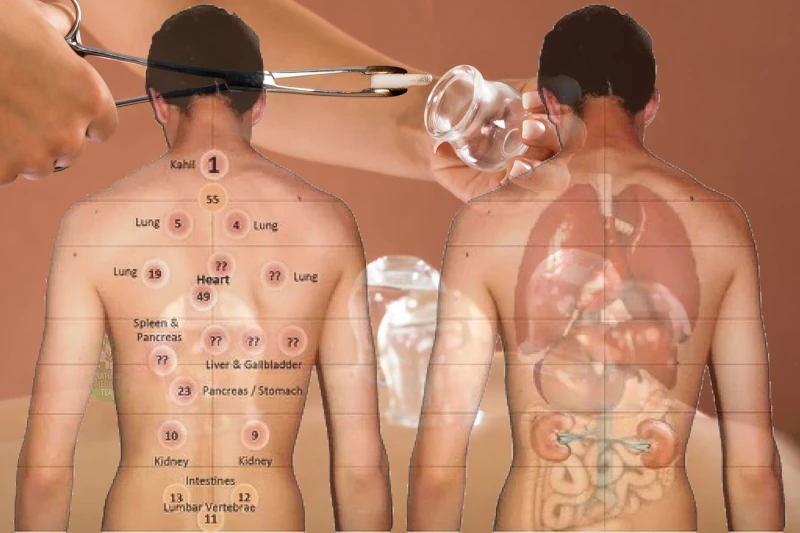
A major benefit of cupping massage is its ability to improve blood circulation. The suction effect draws blood to the surface, encouraging better flow to tissues and promoting healing. This can be particularly beneficial for athletes or individuals with chronic muscle tension. Enhanced blood circulation not only aids in faster recovery but also helps in delivering essential nutrients to the tissues, accelerating the healing process.
Moreover, improved circulation can also have a positive impact on skin health, reducing the appearance of cellulite and promoting a youthful glow. The increase in oxygen and nutrient supply to the skin can help rejuvenate cells and enhance overall complexion. Consequently, many individuals incorporate cupping into their wellness routines not only for its therapeutic effects but also for its potential aesthetic benefits.
Myth 2: Cupping Leaves Permanent Marks
Fire therapy massage as is also known is infamous for leaving circular marks on the skin, which are often mistaken for bruises. These marks are not permanent and usually fade within a week. They occur because of the increased blood flow and the body’s response to the suction, which can cause capillaries near the skin’s surface to break. While they might not be ideal for a photoshoot, they are a temporary side effect of the therapy.
Understanding the nature of these marks can alleviate concerns for those hesitant to try cupping due to its visual aftermath. The discoloration is simply an indication of the body’s response to the therapy and is not harmful. Practitioners often view the marks as a diagnostic tool, providing insight into areas where blood flow may have been restricted. Over time, as the body adjusts, the intensity of the marks may lessen, indicating improved circulation and tissue health.
Fact: Cupping Has a Rich Cultural History
Cupping therapy is not only a staple in Chinese medicine but also has roots in Middle Eastern and Egyptian cultures. Each culture has its unique approach and techniques, highlighting the therapy’s versatility and global acceptance. For instance, “Hajjam” is a traditional Islamic practice of cupping that combines the therapy with the removal of some blood to purify the body.
The cultural significance of cupping extends beyond its therapeutic benefits, serving as a bridge between ancient traditions and modern practices. In many societies, cupping is part of communal wellness rituals and is often accompanied by other holistic practices such as herbal medicine and meditation. This rich tapestry of cultural heritage underscores the universal appeal of cupping as a time-honored healing art that continues to resonate across generations and geographies.
Types of Cupping Massage
There are several variations of cupping massage, each offering unique benefits:
1. Dry Cupping
This is the most common form where the cups are placed on the skin without any additional procedures. It is primarily used to enhance circulation and reduce muscle tension. Dry cupping is often favored for its simplicity and effectiveness. It becomes accessible to practitioners and clients alike.
The straightforward nature of dry cupping allows for easy integration into existing wellness routines, often complementing other therapeutic modalities. Many practitioners combine dry cupping with traditional massage techniques to enhance overall treatment outcomes. Its versatility and ease of application make dry cupping a popular choice for those new to the therapy or seeking a gentle introduction to its benefits.
2. Wet Cupping
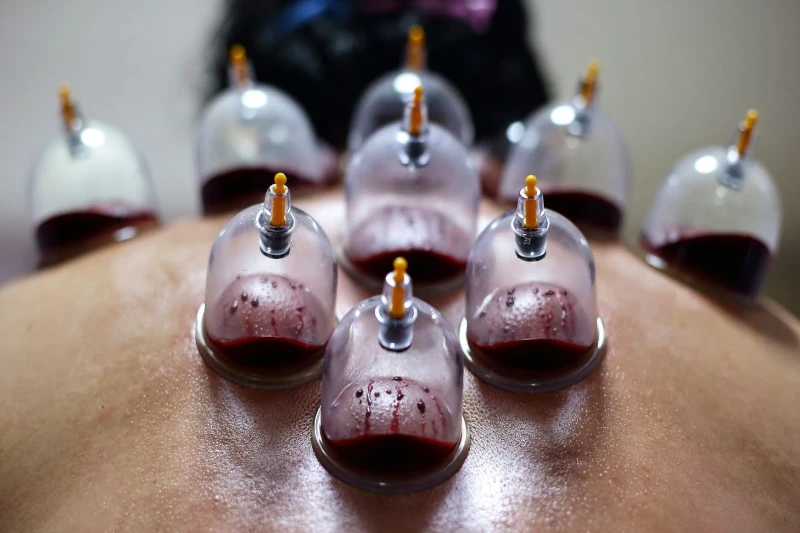
Wet cupping involves making small incisions on the skin before applying the cups. This variation is believed to remove toxins from the body and is often used in traditional Islamic medicine. The practice of wet cupping, or “Hajjam,” is deeply rooted in religious and cultural beliefs. Also viewed as a means of spiritual purification and physical cleansing.
The process of wet cupping requires expertise and precision, as it involves both suction and the controlled removal of blood. Despite its invasive nature, many practitioners and patients believe in its potent detoxifying effects. As with any medical procedure, it is essential to seek a trained and certified practitioner to ensure safety and efficacy.
3. Gliding Cupping Massage
In gliding cupping, oil is applied to the skin, and the cups are moved around to massage the area. This method combines the benefits of cupping with a traditional massage to relieve tension and improve flexibility. The use of oil facilitates smooth movement of the cups, allowing for deeper penetration into the muscles and tissues.
Gliding cupping is particularly effective for targeting large muscle groups and can be tailored to address specific areas of concern. The dynamic nature of this technique provides a comprehensive approach to muscle relaxation and tension relief. While making it a favorite among athletes and active individuals. As the cups glide over the skin, they enhance circulation and promote lymphatic drainage, contributing to overall health and well-being.
Cupping Massage Benefits
Pain Relief
Cupping therapy is often used to relieve back and neck pains, stiff muscles, anxiety, fatigue, migraines, and even cellulite. Its ability to target deep muscle tissues makes it an effective remedy for chronic pain conditions that may not respond well to conventional treatments. The suction created by the cups helps release tension, alleviating discomfort and improving range of motion.
The therapeutic effects of cupping extend beyond physical pain relief, offering mental and emotional benefits as well. The deep relaxation induced by the therapy can help reduce stress levels and improve sleep quality. For individuals dealing with anxiety and fatigue, cupping can serve as a restorative practice that rejuvenates both the body and mind.
Relaxation

Like relaxing time massage therapy, cupping can be deeply relaxing, helping to reduce stress and anxiety levels. The gentle suction and warmth of the cups create a soothing experience that calms the nervous system and promotes a sense of tranquility. As stress is a significant contributor to many health issues, cupping’s relaxation benefits can have a profound impact on overall health and quality of life.
Incorporating cupping into a regular wellness routine can enhance resilience to stress, fostering a balanced and centered state of being. Whether used as a standalone treatment or combined with other relaxation techniques. Its ability to induce relaxation makes it an ideal choice for those seeking a holistic approach to stress management.
Where to Find Cupping Massage
If you’re curious about trying cupping massage, it’s essential to find a reputable practitioner. Search for “cupping massage near me” or “massage cupping near me” to locate clinics or therapists with good reviews. Many spas and wellness centers offer cupping therapy as part of their services, often alongside other traditional massage techniques. When selecting a practitioner, consider their credentials, experience, and client testimonials to ensure a safe and effective treatment.
It’s also beneficial to discuss your health history and treatment goals with the practitioner before starting cupping therapy. A qualified therapist will tailor the session to your specific needs, addressing any concerns and setting realistic expectations. By doing thorough research and choosing a skilled professional, you can optimize the therapeutic benefits of cupping massage and embark on a rewarding wellness journey.
Cupping Massage: Understanding the Truth Behind the Myths
Cupping massage is an ancient practice with a modern appeal. By separating the myths from the facts, you can better appreciate its potential benefits. As always, Energy Spa in Cusco is one of the best options for new therapies techniques like the one mentioned or other well known lymphatic massage therapy. All of these techniques with the Inka ancestral traditions become authentic experiences of healing.
Embark on your wellness journey with an open mind, and perhaps you’ll find that the ancient art of cupping massage is just what you need to rejuvenate your body and spirit. The blend of ancient wisdom and contemporary practice makes cupping a versatile and enriching addition to any wellness regimen. Safe travels and soothing experiences await, as you explore the profound healing potential of this time-honored therapy.

